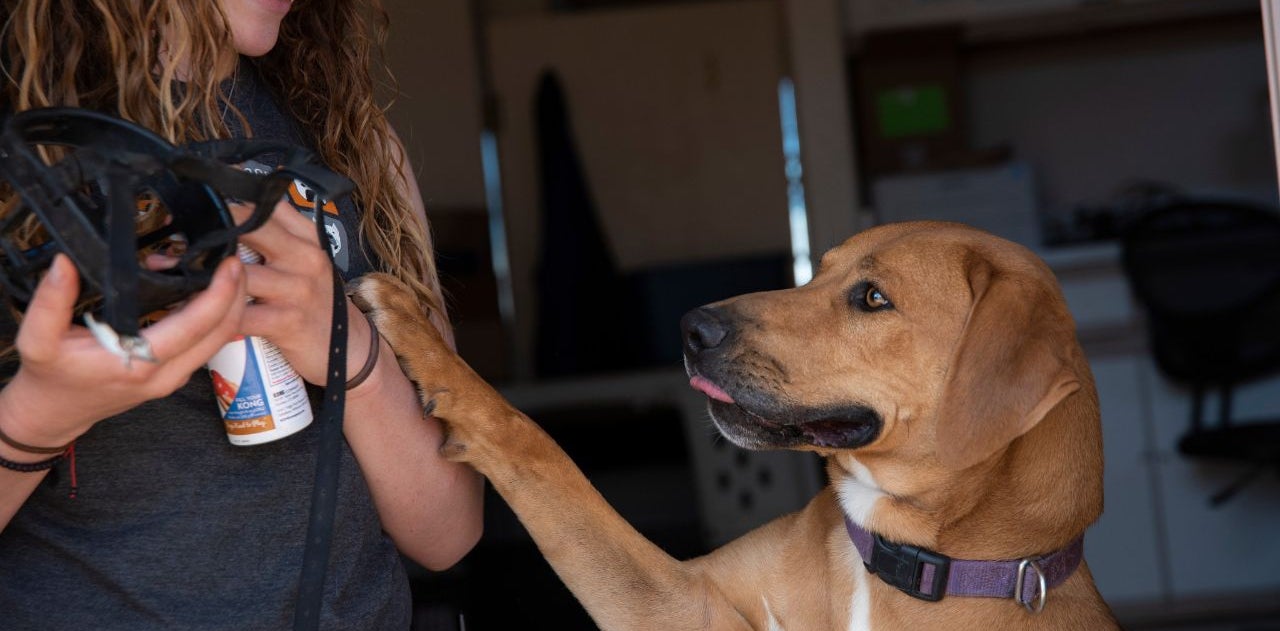
Muzzle Training a Dog
Help us develop this essential skillset for our dogs in a safe and positive way!
If the dog struggles, break the process down into smaller steps, ask BE Staff for help, and keep training sessions short. Most dogs need simple, short sessions over multiple days to feel comfortable and have a positive association with the muzzle. So, take your time and make sure it is fun for all parties involved!
Step 1: Gather supplies in your training space
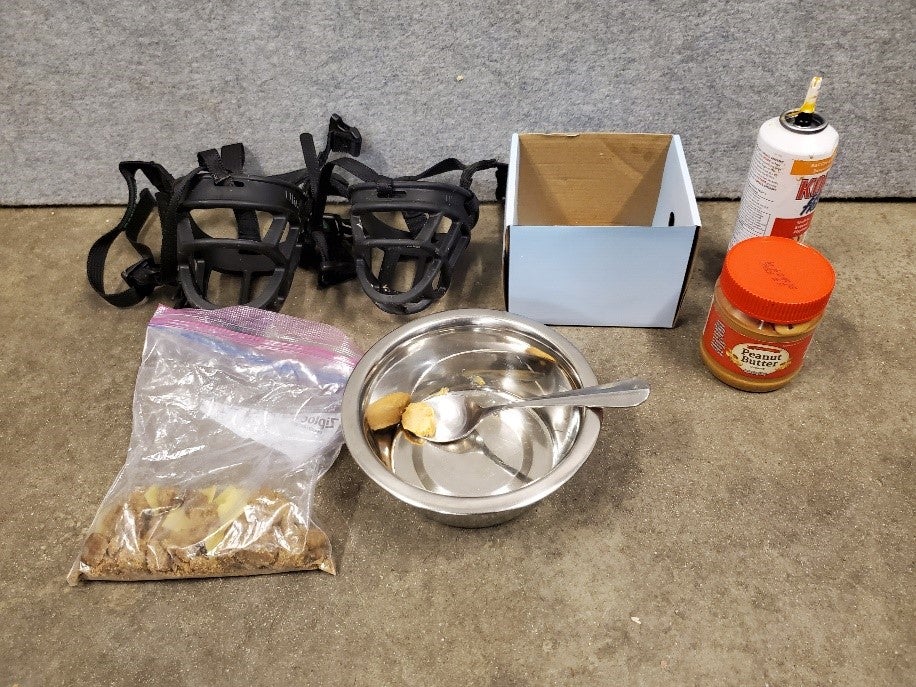
Work in a quieter area with as few distractions as possible. We recommend two sizes of muzzles to try if you don’t already know the dog’s size. Most medium to large sized dogs (50+ lbs.) are a size 4 or 5. Bring tasty bite-sized treats, longer chewy treats (if available), and something sticky like peanut butter and/or squeeze treat from a can or tube.
If dog is on a Special Diet, see staff for options. Make sure the dog always has access to fresh water. They are going to get thirsty!
Step 2: Start training!
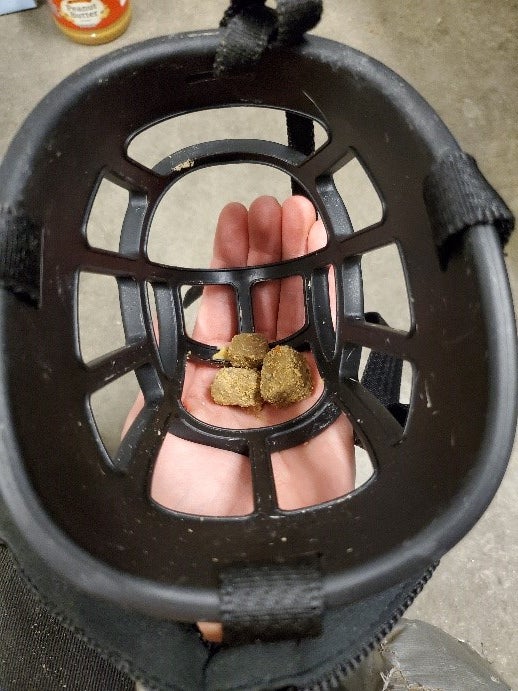
Get their attention by giving them a few “freebie” treats to start to get them interested and engaged.
Make sure your dog likes what’s on the menu. Keep trying different options until you find something they love.
Once you have their interest, cup the muzzle in your hand with treats in the bottom and encourage the dog to put their nose in on their own.
DO NOT FORCE THE MUZZLE ON THE DOG. Let the dog come to the muzzle freely! It’s their choice!
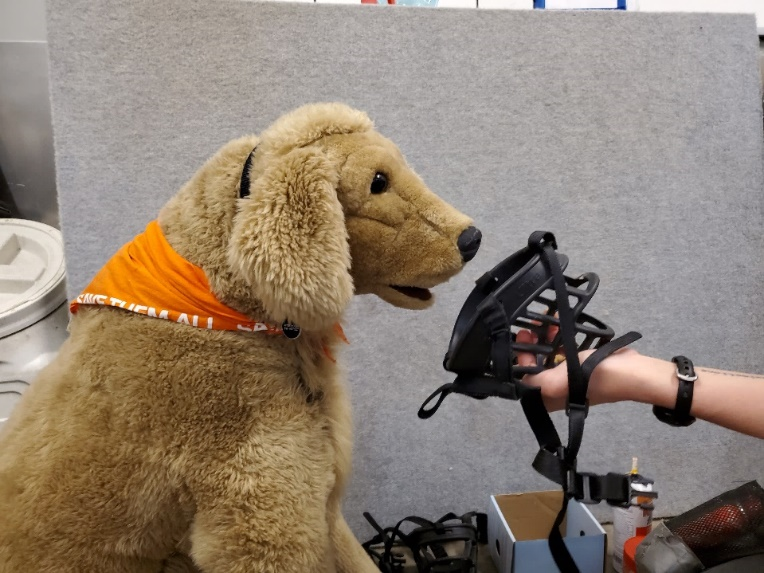
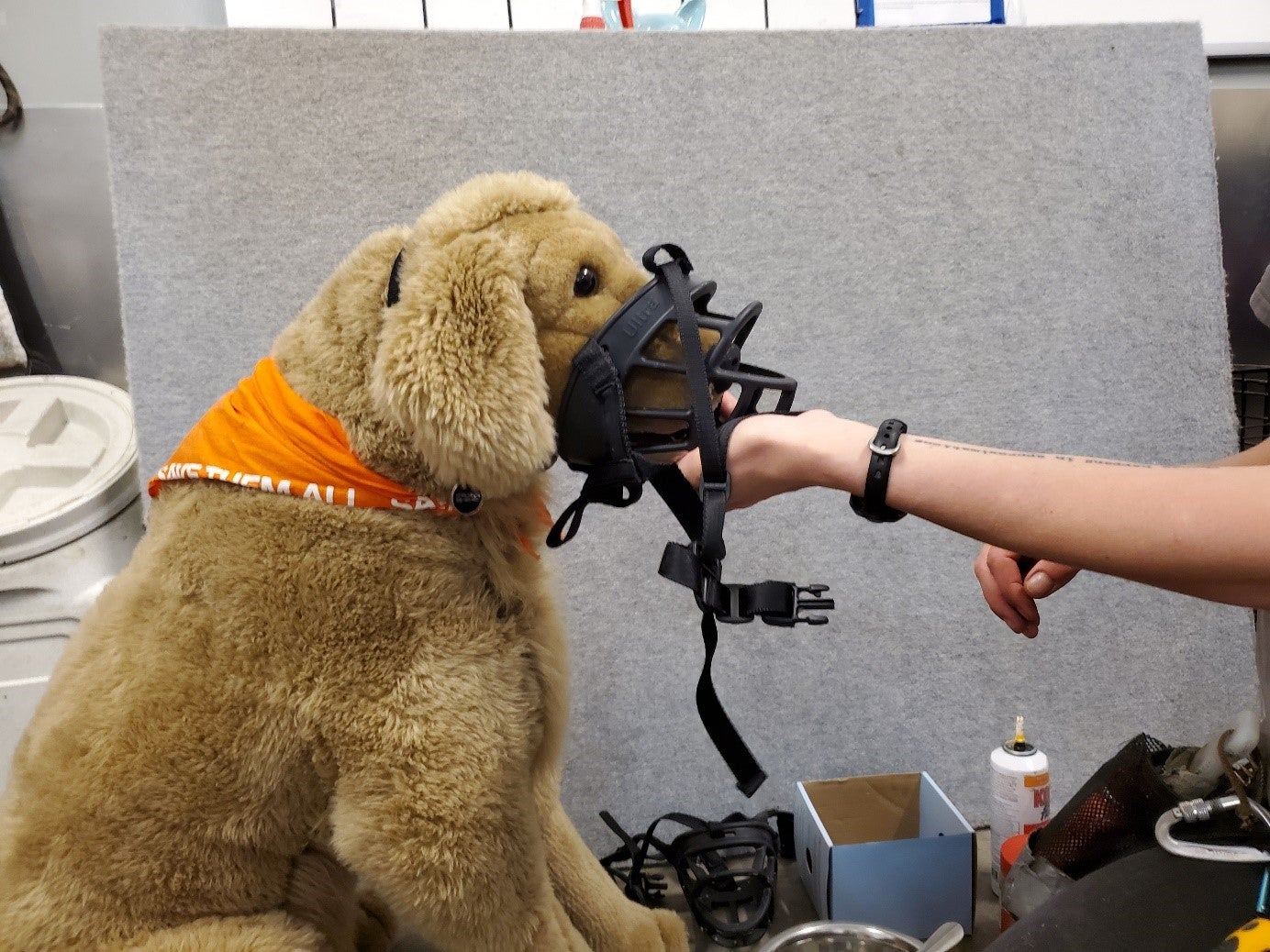
Repeat the exercise of having the dog put their nose in and out of the muzzle until they seem comfortable. You know you’re ready to move to the next step when the dog is excited to see the muzzle and puts their nose in the muzzle in ANTICIPATION of treats.
TROUBLE SHOOTING: If the dog doesn’t want to put their nose in the muzzle, you can give them treats for approaching it, sniffing it, or putting their nose in it partially. Work in little baby steps to get them comfortable putting their nose all the way in. Some dogs are successful when you start with a larger, over-sized muzzle. If the dog won’t approach while you’re holding the muzzle, try placing it in a small box or bowl with food inside.
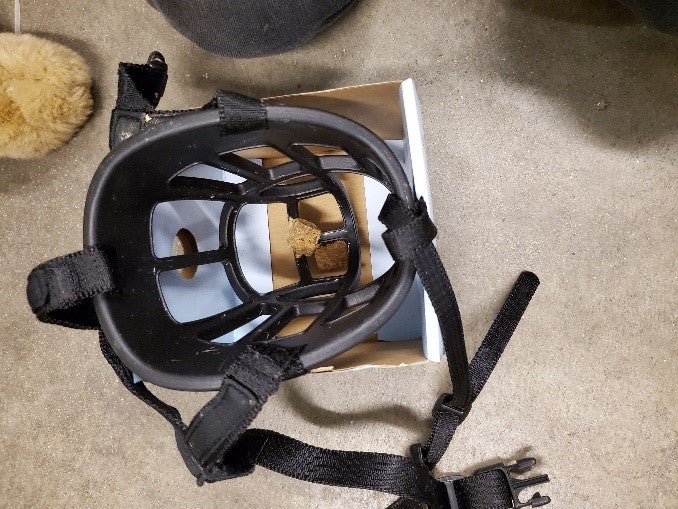
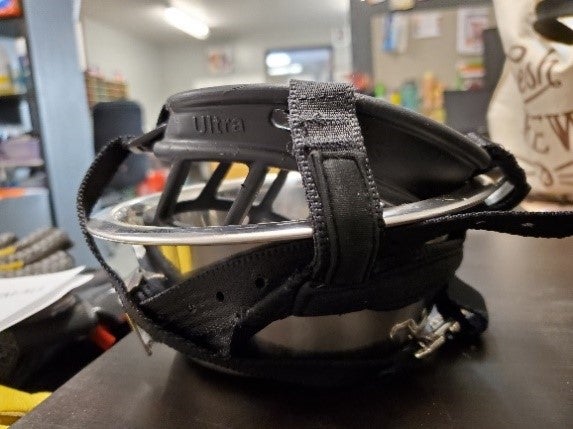
TIP: Dogs that snatch hard at treats and struggle eating through the muzzle may do better with long stick-like or jerky style treats. String cheese or thinly sliced carrot sticks or green beans are also good options to try. Some dogs LOVE vegetables! You can also continue to use peanut butter on a spoon in small portions.
SECRET PRO TIP: It can be challenging to manage the muzzle, food, and straps at the same time. Try sitting down and holding the muzzle between your knees!
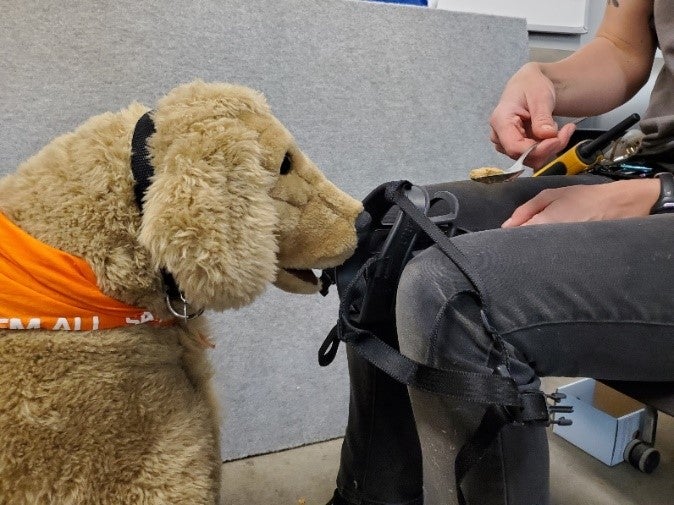
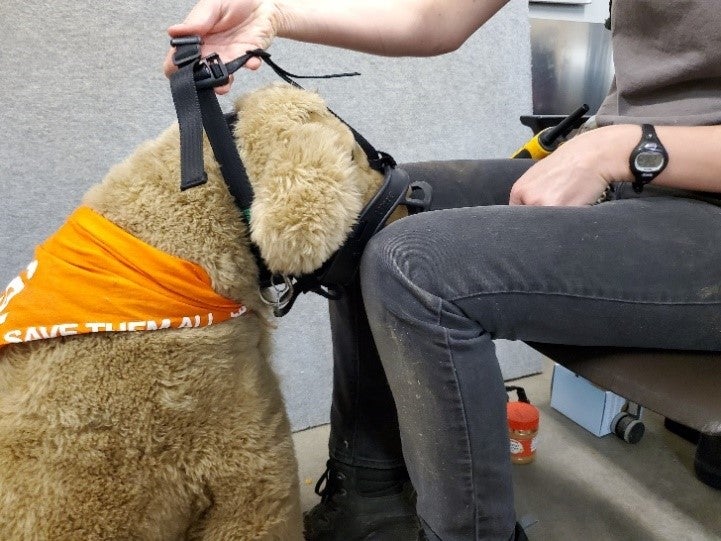
BONUS: Put “Muzzle” on cue
When the dog is putting their nose in the muzzle automatically, you can put muzzling on cue! Present the muzzle and before the dog puts their nose in, say “Muzzle!” in a happy, excited voice. Then immediately place a treat at the end.
It should look like this:
- Say “Muzzle!”
- Dog puts nose all the way into the end of the muzzle.
- Give treat.
You can build the duration of the time that the dog has their nose in the muzzle by slightly delaying the treat delivery second by second. EXTRA BONUS: Add touching the strap of the muzzle before delivering the treat, then moving the strap, then lifting the strap up, then putting over the neck, etc.
Step 3: Building Duration and Adding the Strap
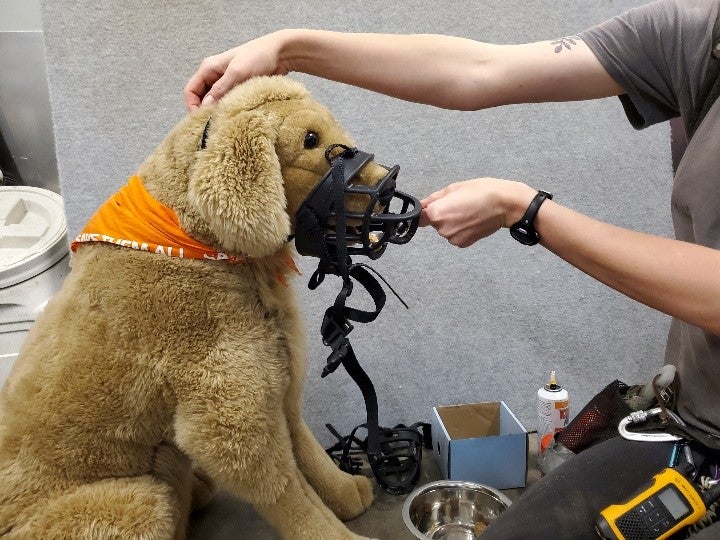
Once the dog is comfortable putting their nose in and taking treats, you can build their comfort with having the strap added. Give the dog peanut butter or other wet, sticky food – something that will take them time to lick off.
Gently scratch and pet the dog’s neck while they keep their nose in the muzzle.
If comfortable, start lifting the strap gently over their head. Build slowly until you can gently grasp both sides of the straps together, without buckling it.
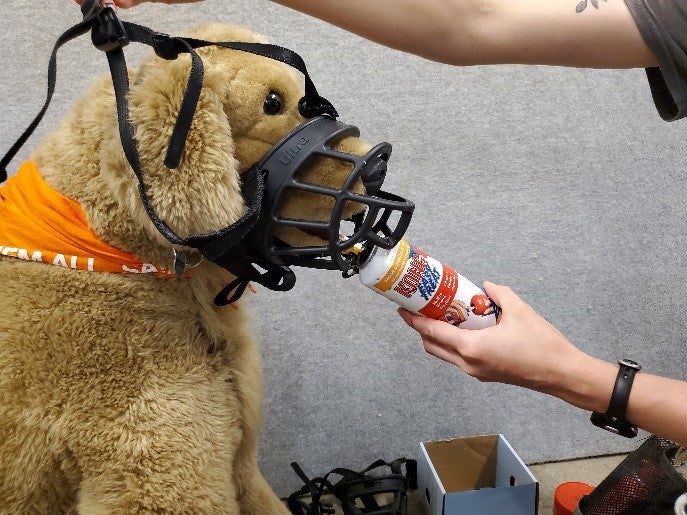
Once they are comfortable at this stage, try feeding them treats one at a time while keeping the strap secure and taking short breaks in between each treat (so that they aren’t continuously eating/licking).
Step 4: Buckling the Strap and Wearing the Muzzle

If the dog is comfortable by this point, you should be able to buckle the strap while they’re eating a tasty treat.
Keep the dog’s focus by getting them to Sit, give eye contact, and come to you. Take the muzzle off for frequent breaks. This is also the time to add a leash and get the dog moving. If the dog paws at the muzzle, encourage them to keep walking and pick up the pace. Praise them continuously.
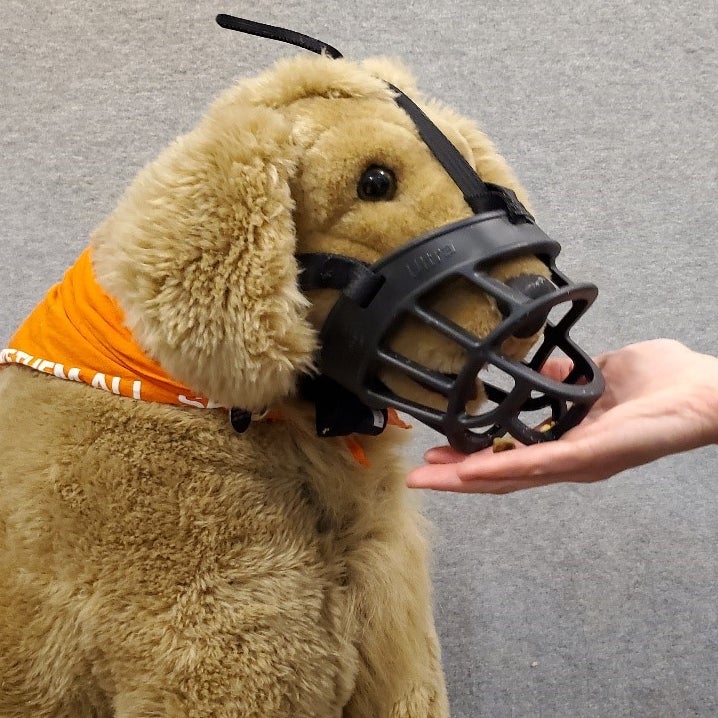
If the dog paws at the muzzle more than once or with a lot of intensity, it’s a sign that they aren’t comfortable and need to return to a previous step. Distract the dog from pawing for a few seconds before taking the muzzle off. Take a break, go back to Step 1 briefly, and end the session on a positive note.